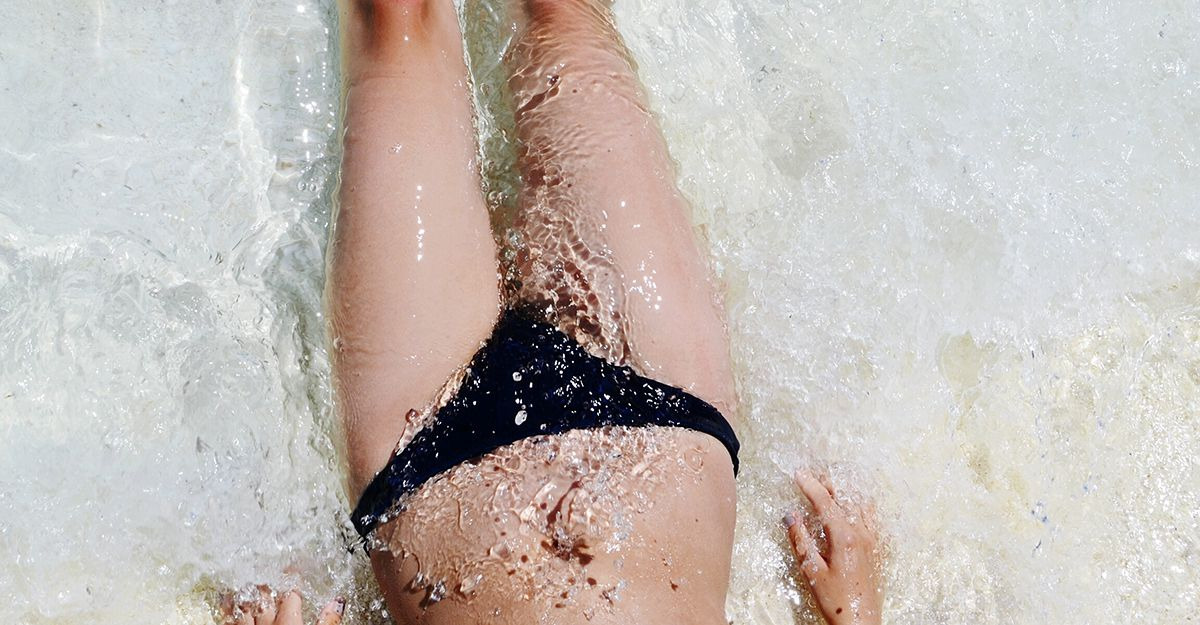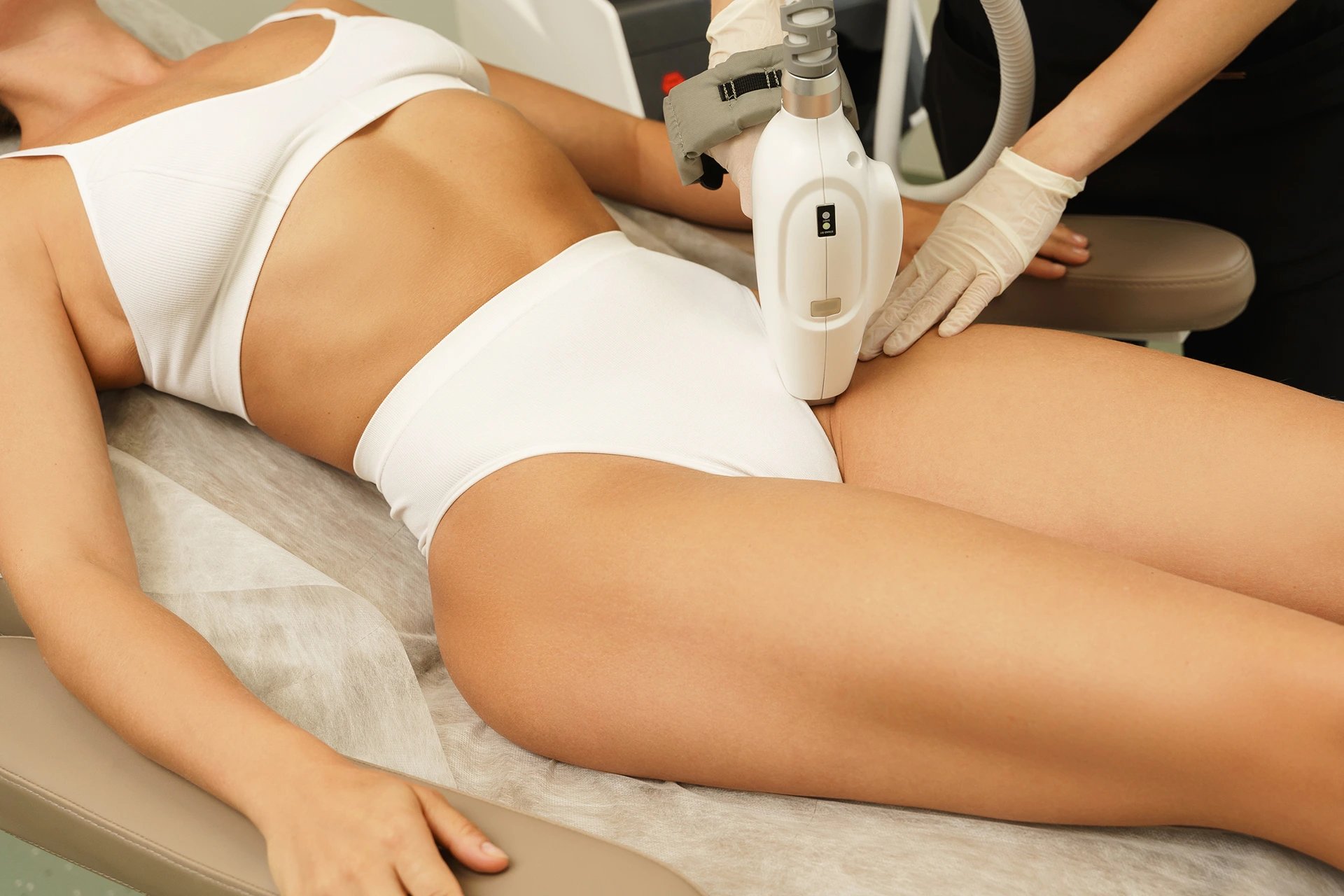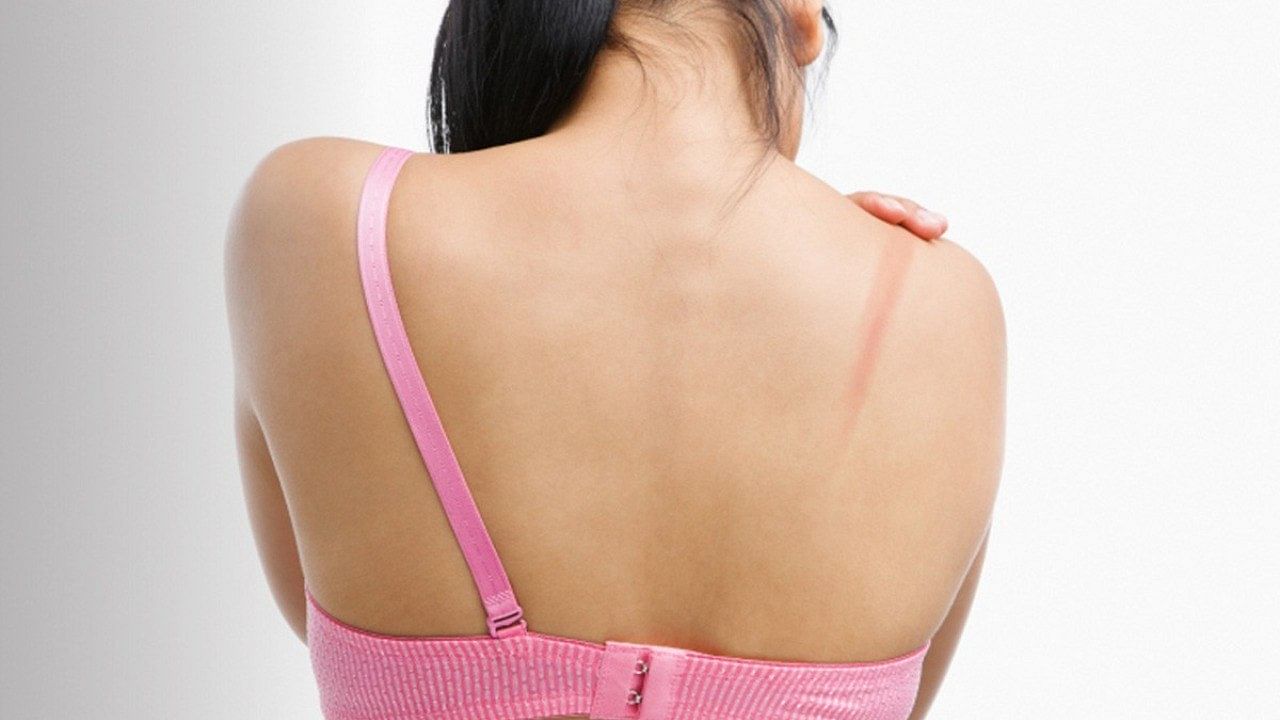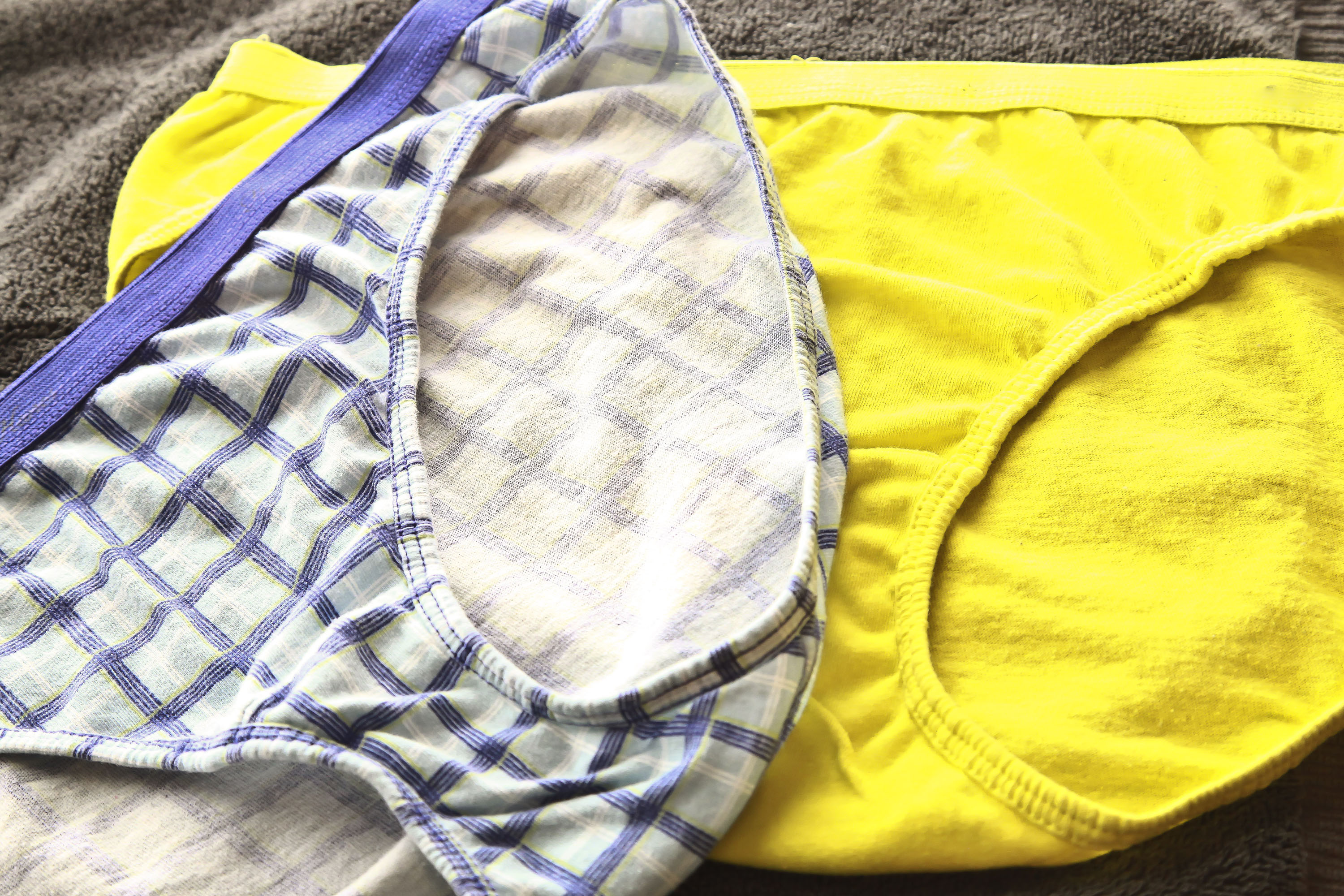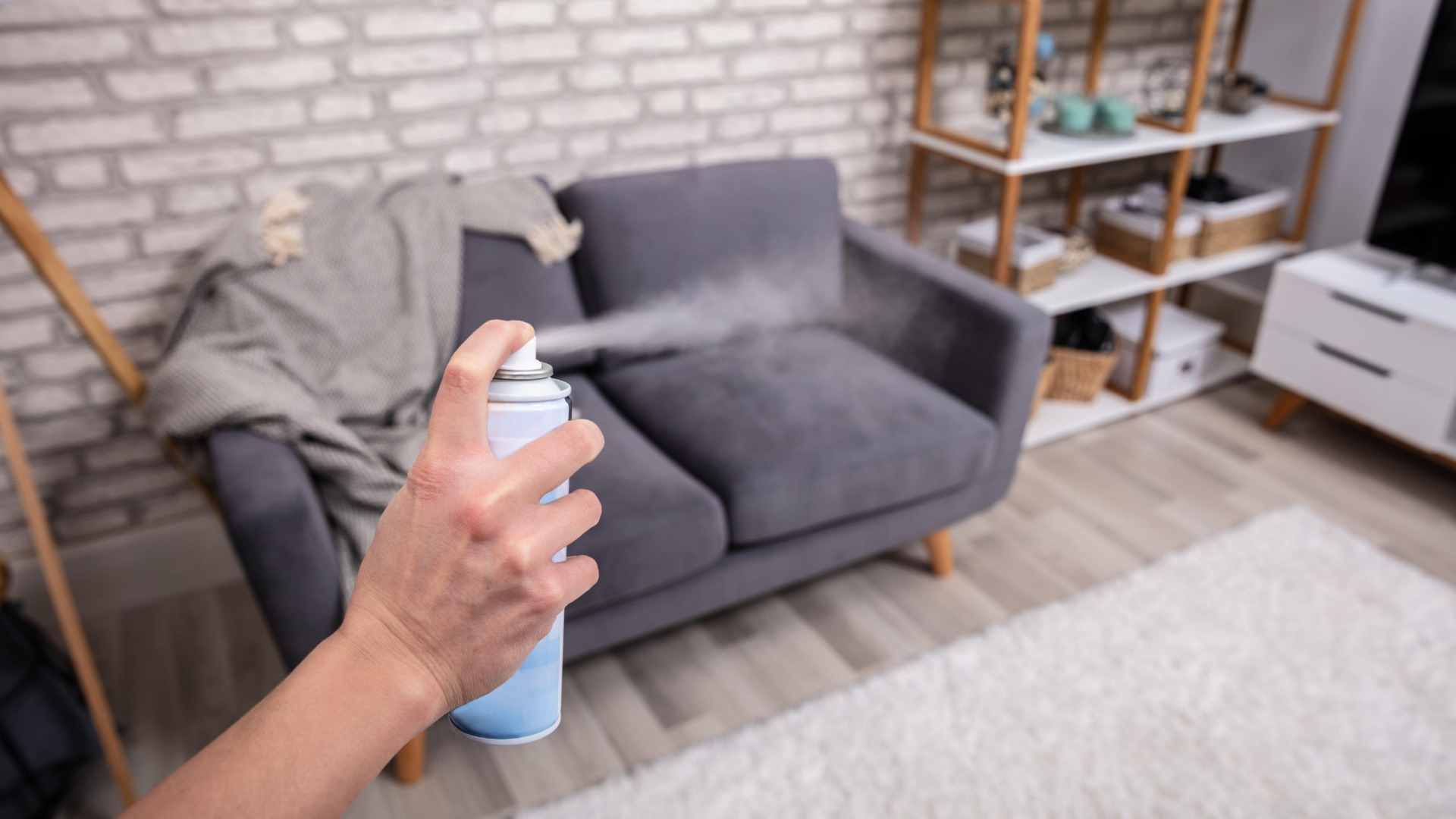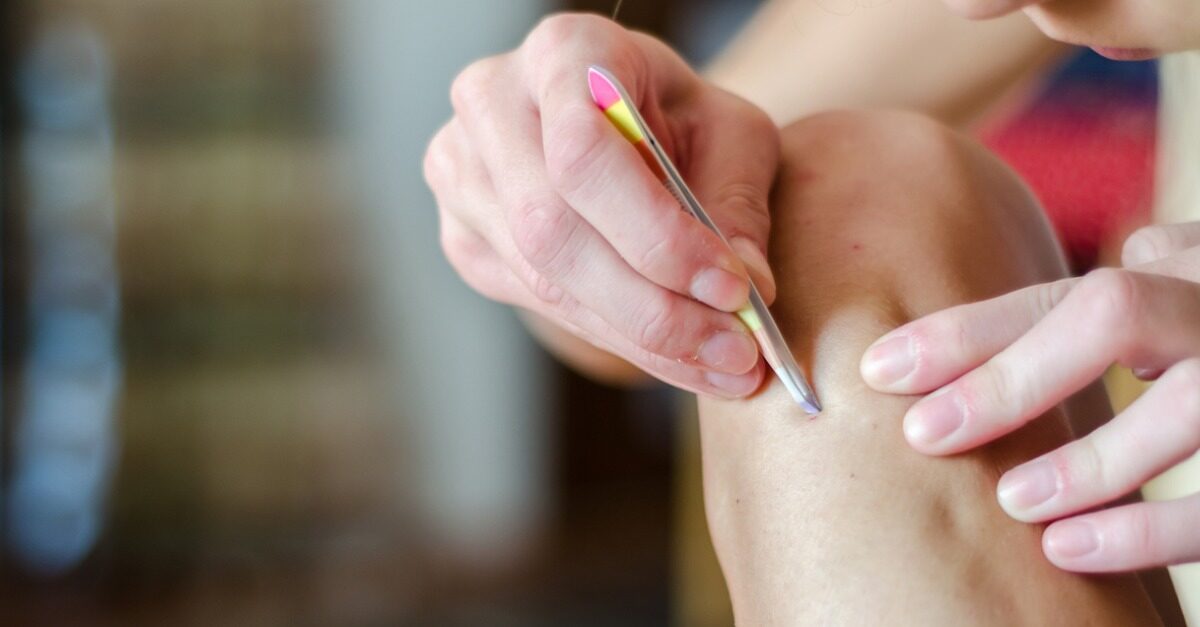Home>How-to Guides>For Women>How To Get Rid Of Ingrown Hairs On Bikini Area
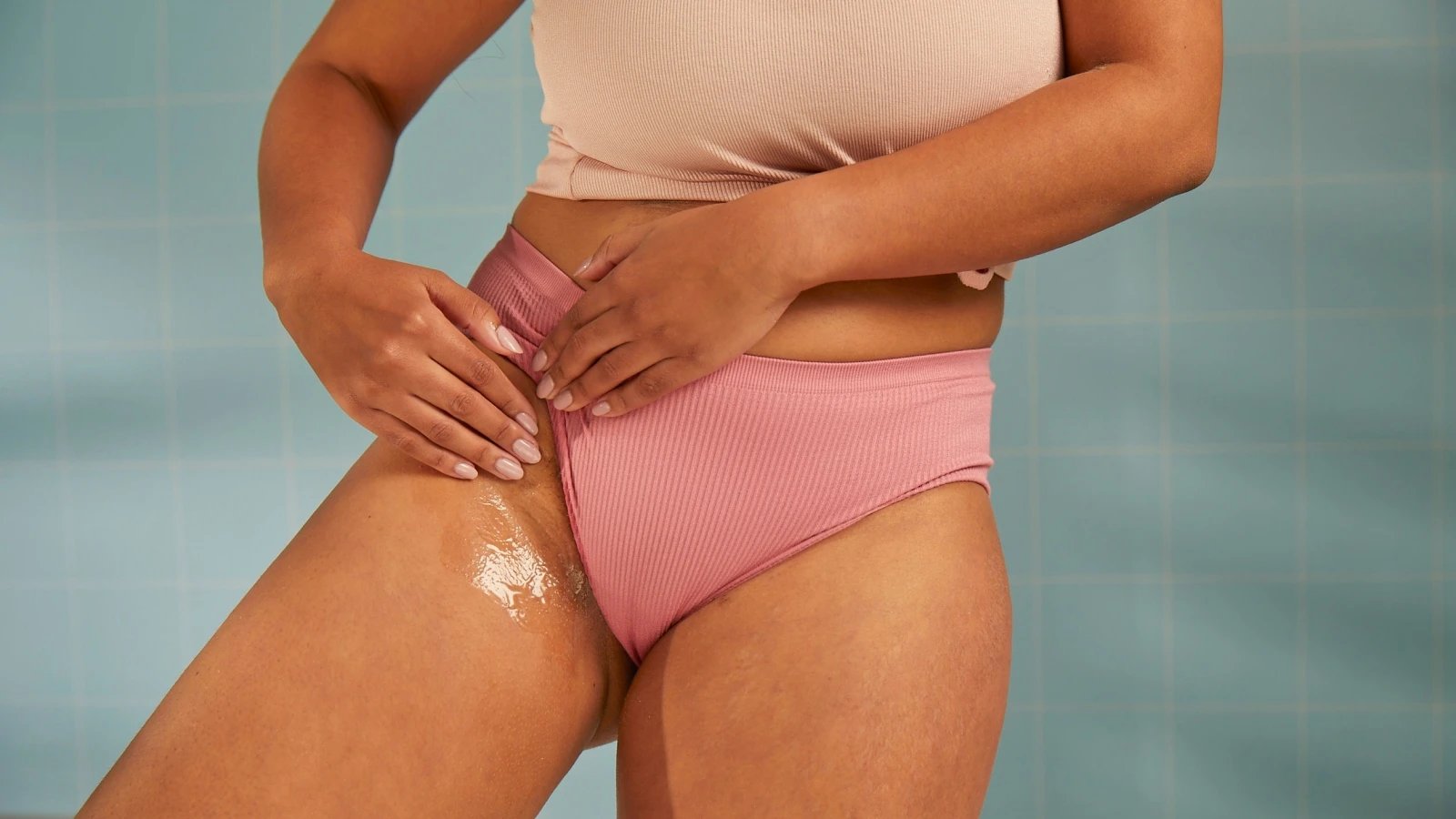

For Women
How To Get Rid Of Ingrown Hairs On Bikini Area
Modified: September 23, 2023
Learn effective techniques for women to get rid of ingrown hairs on the bikini area and achieve smoother skin.
(Many of the links in this article redirect to a specific reviewed product. Your purchase of these products through affiliate links helps to generate commission for Under-tec.com, at no extra cost. Learn more)
Table of Contents
- Introduction
- Understanding Ingrown Hairs
- Causes of Ingrown Hairs on the Bikini Area
- Prevention Tips
- Exfoliating the Bikini Area
- Shaving Techniques to Prevent Ingrown Hairs
- Waxing and Hair Removal Creams
- Treating Ingrown Hairs on the Bikini Area
- Home Remedies for Ingrown Hairs
- When to Seek Medical Advice
- Conclusion
Introduction
Welcome to the ultimate guide on how to get rid of ingrown hairs on the bikini area. Dealing with ingrown hairs can be frustrating and uncomfortable, especially in sensitive areas like the bikini area. But fear not, as we’re here to provide you with effective solutions to prevent and treat ingrown hairs.
Ingrown hairs occur when the hair follicles curl or grow sideways into the skin instead of out. This often leads to irritation, redness, and the formation of small bumps that can be itchy and painful. While anyone can experience ingrown hairs, they are more common in areas where hair is frequently shaved or waxed, such as the bikini area.
Understanding the causes of ingrown hairs is crucial in preventing their occurrence. Poor shaving techniques, inadequate exfoliation, and tight clothing can contribute to the development of ingrown hairs. By implementing the right preventive measures and opting for proper hair removal methods, you can reduce the likelihood of ingrown hairs and enjoy a smoother bikini area.
In this comprehensive guide, we will discuss the causes of ingrown hairs on the bikini area, provide tips for preventing them, and explore different ways to treat existing ingrown hairs. Additionally, we will delve into effective home remedies and highlight when it may be necessary to seek medical advice.
So, whether you’re preparing for beach season or simply seeking relief from pesky ingrown hairs, read on to find the solutions that will have you feeling confident and comfortable in no time.
Understanding Ingrown Hairs
Before diving into the solutions for getting rid of ingrown hairs on the bikini area, it’s important to understand what they are and how they form. Ingrown hairs occur when a hair follicle grows back into the skin instead of emerging from the surface. This can lead to irritation, inflammation, and the formation of small, painful bumps.
Anyone can experience ingrown hairs, but they are more common in areas where hair is frequently shaved or waxed. The bikini area is particularly susceptible due to its sensitive nature and the coarser hair that typically grows in this region.
When a hair follicle becomes ingrown, it can cause discomfort and an unsightly appearance. The hair follicle may become trapped beneath the skin’s surface, leading to the formation of a raised bump or pus-filled pimple. Ingrown hairs can also cause itching and redness, making them even more bothersome.
Ingrown hairs can be caused by various factors, including:
- Tight clothing that irritates the hair follicles and causes them to grow back into the skin.
- Poor shaving techniques, such as using dull blades or shaving against the direction of hair growth.
- Curly or coarse hair that is more likely to become trapped beneath the skin’s surface.
- Build-up of dead skin cells that block the hair follicles.
- Friction from tight underwear or clothing rubbing against the skin.
Understanding these underlying causes is crucial in preventing ingrown hairs. By addressing these factors and adopting proper hair removal techniques, you can significantly reduce the occurrence of ingrown hairs on the bikini area.
In the next sections, we will delve into effective prevention tips, discuss different hair removal methods, and provide advice on treating existing ingrown hairs. Read on to discover how to achieve a smooth and ingrown hair-free bikini area.
Causes of Ingrown Hairs on the Bikini Area
Ingrown hairs on the bikini area can be caused by a combination of factors, including improper hair removal techniques, certain hair types, and external irritants. Understanding these causes can help you identify the root of the problem and take appropriate measures to prevent ingrown hairs.
Here are some common causes of ingrown hairs on the bikini area:
- Poor Shaving Techniques: Using a dull razor, shaving against the direction of hair growth, or applying too much pressure while shaving can increase the likelihood of ingrown hairs. These practices can cause the hair to break instead of being cleanly cut, leading to the hair growing back into the skin.
- Tight Clothing: Wearing tight underwear or swimsuits can contribute to ingrown hairs. The constant rubbing and friction caused by tight clothing can irritate the hair follicles, causing them to curl back into the skin.
- Curly or Coarse Hair: Individuals with curly or coarse hair are more prone to ingrown hairs. The natural curliness of the hair can cause it to turn back into the skin instead of growing straight out. This is especially common in the bikini area, where the hair tends to be thicker and more tightly curled.
- Build-up of Dead Skin Cells: Accumulation of dead skin cells can block the hair follicles, preventing the hair from growing out properly. This can lead to the hair curling back into the skin. Regular exfoliation is essential to remove dead skin cells and keep the follicles clear.
- Friction and Irritants: Constant friction caused by rubbing against clothing or frequent touching of the bikini area can irritate the hair follicles, making them more susceptible to ingrown hairs. Additionally, certain irritants such as harsh soaps or lotions can also contribute to the development of ingrown hairs.
By understanding the causes of ingrown hairs on the bikini area, you can take proactive measures to prevent their occurrence. In the following sections, we will provide tips and techniques for preventing ingrown hairs and maintaining a smooth and healthy bikini area.
Prevention Tips
Preventing ingrown hairs on the bikini area requires a combination of proper hair removal techniques and good skincare practices. By following these prevention tips, you can significantly reduce the occurrence of ingrown hairs and maintain a smooth and irritation-free bikini area.
- Exfoliate Regularly: One of the most effective ways to prevent ingrown hairs is by exfoliating the bikini area regularly. This helps remove dead skin cells that can clog the hair follicles, allowing the hair to grow freely. Use a gentle exfoliating scrub or a soft brush and gently massage the area in circular motions.
- Choose the Right Shaving Technique: If you prefer shaving as your hair removal method, it’s important to choose the right technique to minimize the risk of ingrown hairs. Start by taking a warm shower or placing a warm towel on the area to soften the hair. Use a sharp, clean razor and shave in the direction of hair growth to prevent the hair from curling back into the skin. Avoid pressing too hard or going over the same area repeatedly, as this can cause irritation.
- Moisturize the Bikini Area: Keeping the skin moisturized is essential for preventing ingrown hairs. Dry skin can contribute to the development of ingrown hairs, so make sure to moisturize the bikini area regularly. Opt for a gentle, fragrance-free moisturizer that won’t irritate the skin.
- Avoid Tight Clothing: Tight clothing can rub against the bikini area and cause irritation, leading to ingrown hairs. Opt for loose-fitting underwear and avoid wearing tight swimsuits for extended periods. This allows the skin to breathe and reduces friction against the hair follicles.
- Consider Alternative Hair Removal Methods: If you find that shaving frequently leads to ingrown hairs, you may want to explore alternative hair removal methods such as waxing or using hair removal creams. These methods remove the hair from the root, reducing the chances of ingrown hairs.
- Be Gentle with the Skin: Avoid excessive scrubbing or picking at the bikini area, as this can cause further irritation and increase the risk of ingrown hairs. Treat the area with care, and if you notice any ingrown hairs, resist the urge to dig them out with tweezers, as this can lead to infection.
By implementing these prevention tips, you can create a healthy environment for hair growth in the bikini area, reducing the occurrence of ingrown hairs. However, if you do experience ingrown hairs, there are various treatment options available, which will be discussed in the following sections.
Exfoliating the Bikini Area
Exfoliating the bikini area is an essential step in preventing ingrown hairs. By removing dead skin cells and unclogging the hair follicles, you create a smooth surface for hair to grow without obstruction. Here are some tips on how to effectively exfoliate the bikini area:
- Choose the Right Exfoliator: Look for a gentle exfoliating product specifically formulated for sensitive areas. Avoid harsh scrubs or products with large exfoliating particles, as they can be too abrasive for the delicate skin in the bikini area.
- Exfoliate before Hair Removal: It’s best to exfoliate the bikini area a day or two before you plan to remove the hair. This allows time for the skin to recover from any mild irritation caused by exfoliation. Exfoliating before hair removal helps to clear away dead skin cells and allows for a closer shave or waxing session.
- Use Gentle Circular Motions: When exfoliating, use gentle circular motions to massage the exfoliator into the skin. This helps to loosen dead skin cells and encourages blood circulation in the area. Avoid scrubbing too vigorously, as this can cause irritation.
- Pay Attention to Ingrown-Prone Areas: Focus on exfoliating the areas where you are more prone to ingrown hairs, such as the bikini line and the lower abdomen. These areas often have thicker and coarser hair, making them more susceptible to ingrown hairs.
- Don’t Over-exfoliate: While exfoliating is important, it’s equally important not to overdo it. Exfoliating too frequently or using harsh products can strip the skin of its natural oils and cause dryness and irritation. Aim to exfoliate the bikini area once or twice a week, depending on your skin’s sensitivity.
- Moisturize After Exfoliation: After exfoliating, it’s crucial to moisturize the bikini area to keep the skin hydrated. Choose a moisturizer that is non-greasy and preferably fragrance-free. This helps in maintaining a healthy skin barrier and reduces the risk of ingrown hairs.
By incorporating regular exfoliation into your skincare routine, you can prevent the buildup of dead skin cells and maintain a smooth bikini area. In the next section, we will explore shaving techniques that can help minimize the occurrence of ingrown hairs.
Shaving Techniques to Prevent Ingrown Hairs
Shaving is a popular method for removing hair from the bikini area, but it can also lead to the development of ingrown hairs if not done properly. By following the right shaving techniques, you can minimize the risk of ingrown hairs and achieve a smooth and irritation-free bikini area.
Here are some shaving techniques to help prevent ingrown hairs:
- Prepare the Skin: Before shaving, take a warm shower or place a warm towel on the bikini area to soften the hair and open up the pores. This helps to facilitate a closer shave and reduces the chances of ingrown hairs.
- Use a Clean and Sharp Razor: Always use a clean and sharp razor when shaving the bikini area. A dull blade can cause irritation and increase the likelihood of ingrown hairs. Replace the razor blade frequently to maintain its effectiveness.
- Shave in the Direction of Hair Growth: When shaving the bikini area, it’s important to shave in the direction of hair growth. This helps to minimize irritation and reduce the chances of hair follicles curling back into the skin. Shaving against the grain can lead to ingrown hairs.
- Use Light Pressure: Avoid pressing too hard when shaving, as this can cause irritation and increase the risk of ingrown hairs. Let the razor glide gently over the skin, allowing the sharp blades to do the work without excessive force.
- Rinse the Razor Frequently: Rinse the razor blade under warm water frequently while shaving to remove any trapped hairs or shaving cream. This ensures a clean and effective shave and reduces the chances of clogged hair follicles.
- Don’t Go Over the Same Area Repeatedly: Going over the same area multiple times can lead to irritation and increase the risk of ingrown hairs. Aim for a single, smooth stroke when shaving the bikini area.
- Moisturize After Shaving: After shaving, make sure to moisturize the bikini area to soothe the skin and prevent dryness. Choose a moisturizer that is gentle and preferably fragrance-free. Moisturizing helps to maintain the skin’s moisture barrier and reduces the chances of ingrown hairs.
By following these shaving techniques, you can minimize the risk of ingrown hairs and achieve a smoother and more comfortable bikini area. However, if shaving continues to cause frequent ingrown hairs, it may be worth considering alternative hair removal methods, such as waxing or hair removal creams, which will be discussed in the next section.
Waxing and Hair Removal Creams
If shaving has been causing frequent ingrown hairs on your bikini area, you may want to explore alternative hair removal methods such as waxing or hair removal creams. These methods remove the hair from the root, reducing the chances of ingrown hairs. Here’s what you need to know about waxing and hair removal creams:
- Waxing: Waxing involves applying hot or cold wax to the skin and then removing it along with the hair. This method offers longer-lasting results compared to shaving, as it removes the hair from the root. By pulling the hair out completely, waxing helps to minimize the risk of ingrown hairs. However, it’s important to note that waxing can be slightly painful, especially the first few times.
- Hair Removal Creams: Hair removal creams, also known as depilatory creams, work by dissolving the hair just below the surface of the skin. These creams contain chemicals that break down the proteins in the hair, making it easy to wipe away. Hair removal creams are relatively painless and provide results that last longer than shaving. However, it’s important to follow the instructions carefully and perform a patch test first to ensure that your skin does not have any adverse reactions to the cream.
- Tips for Waxing and Using Hair Removal Creams:
- Ensure that the area is clean and dry before waxing or applying the hair removal cream.
- Follow the instructions provided with the waxing kit or hair removal cream carefully.
- Perform a patch test prior to using the product to check for any allergies or adverse reactions.
- Test the temperature of the wax before applying it to the skin to avoid burns.
- Apply the wax or hair removal cream evenly and in the direction of hair growth.
- Follow the recommended waiting time as directed by the product.
- Gently remove the wax or wipe away the hair removal cream according to the instructions.
- Moisturize the skin after waxing or using hair removal creams to soothe and hydrate the area.
Both waxing and hair removal creams are effective alternatives to shaving for reducing the occurrence of ingrown hairs on the bikini area. Experiment with these methods to see which one works best for you. If you still experience frequent ingrown hairs, it may be necessary to consider professional hair removal options or seek dermatological advice.
Treating Ingrown Hairs on the Bikini Area
Dealing with ingrown hairs on the bikini area can be uncomfortable and bothersome. Luckily, there are several effective treatments available to alleviate the symptoms and promote healing. Here are some ways to treat ingrown hairs on the bikini area:
- Leave the Ingrown Hair Alone: It may be tempting to pick or squeeze an ingrown hair, but this can lead to further irritation, infection, and scarring. Avoid touching or trying to remove the ingrown hair yourself.
- Apply Warm Compresses: To help soothe the area and encourage the hair to surface, apply a warm compress to the affected area for about 10-15 minutes. The warmth will help to open up the pores and reduce inflammation.
- Gently Exfoliate: After applying the warm compress, gently exfoliate the area using a soft brush or a gentle exfoliating scrub. This helps to remove dead skin cells and free the trapped hair.
- Use Over-the-Counter Ingrown Hair Products: There are various over-the-counter products available specifically designed to treat ingrown hairs. These products often contain ingredients like salicylic acid or glycolic acid, which help exfoliate the skin and reduce inflammation. Follow the instructions on the product for best results.
- Apply Tea Tree Oil: Known for its antibacterial and anti-inflammatory properties, tea tree oil can help treat ingrown hairs. Dilute a few drops of tea tree oil with a carrier oil like coconut or jojoba oil, and apply it to the affected area using a cotton ball. This can help reduce redness and prevent infection.
- Seek Professional Help: If the ingrown hair persists, becomes infected, or causes severe discomfort, it may be necessary to seek professional help. A dermatologist or esthetician can safely remove the ingrown hair using sterile instruments or provide other treatment options such as laser hair removal.
Remember, prevention is key when it comes to ingrown hairs. By following proper hair removal techniques and regularly exfoliating the bikini area, you can minimize the occurrence of ingrown hairs. If you continue to experience persistent or severe ingrown hairs, it’s important to consult with a healthcare professional to determine the underlying cause and explore further treatment options.
Home Remedies for Ingrown Hairs
If you prefer natural remedies, there are several home remedies that can help alleviate the discomfort and promote healing of ingrown hairs on the bikini area. While these remedies may not work for everyone, many people find them effective. Here are some common home remedies for treating ingrown hairs:
- Warm Compress: Applying a warm compress to the affected area can help soften the skin, open up the pores, and reduce inflammation. Simply soak a clean washcloth in warm water and place it on the ingrown hair for about 10 minutes. Repeat this a few times a day to soothe the area and encourage the hair to surface.
- Tea Tree Oil: Tea tree oil has natural anti-inflammatory and antiseptic properties, making it a popular choice for treating ingrown hairs. Dilute a few drops of tea tree oil with a carrier oil like coconut or jojoba oil, and apply it to the ingrown hair using a cotton ball. Leave it on for 10-15 minutes before rinsing off. Repeat this process 2-3 times a day until the ingrown hair resolves.
- Aloe Vera Gel: Aloe vera has soothing and anti-inflammatory properties that can help reduce redness and inflammation associated with ingrown hairs. Apply pure aloe vera gel to the affected area and leave it on for 10-15 minutes before rinsing off. Repeat this process a few times a day to promote healing.
- Baking Soda Paste: Baking soda can help exfoliate the skin and reduce inflammation. Mix a tablespoon of baking soda with enough water to form a paste. Apply the paste to the ingrown hair and leave it on for 10-15 minutes. Rinse it off with warm water and repeat this process 2-3 times a day for optimal results.
- Coconut Oil: Coconut oil is known for its moisturizing and antimicrobial properties. Apply a small amount of organic coconut oil to the ingrown hair and gently massage it into the skin. Leave it on overnight and rinse off in the morning. Repeat this process daily until the ingrown hair improves.
- Black Tea Bags: Black tea contains tannic acid, which helps reduce redness and soothe irritated skin. Steep a black tea bag in hot water for a few minutes, then let it cool down. Place the tea bag on the ingrown hair for 5-10 minutes. Repeat this process a few times a day to ease discomfort and encourage the ingrown hair to come to the surface.
- Cucumber Slices: Cucumber has cooling and soothing properties that can provide relief from inflammation and itching. Slice a chilled cucumber and place the slices on the affected area for 10-15 minutes. Repeat this process as needed to alleviate discomfort.
These home remedies can help reduce inflammation, soothe the skin, and promote the healing of ingrown hairs. However, if you don’t see improvement or if the condition worsens, it’s advisable to seek medical advice for further evaluation and treatment options.
When to Seek Medical Advice
Most cases of ingrown hairs on the bikini area can be successfully treated at home with proper care and remedies. However, there are instances when it is necessary to seek medical advice for further evaluation and treatment. Here are some situations when you should consider seeking medical attention:
- Persistent or Severe Symptoms: If the ingrown hair persists or becomes increasingly painful, swollen, or infected, it is essential to consult a healthcare professional. They can examine the area and determine the best course of action to alleviate your symptoms.
- Large or Deeply Embedded Ingrown Hairs: If the ingrown hair is particularly large or deeply embedded in the skin, it may require medical intervention to safely remove it. Attempting to remove it yourself can lead to further complications or infection.
- Signs of Infection: If you notice signs of infection, such as increased pain, pus, red streaks, or fever, it is crucial to seek medical attention. Infections can be serious and may require prescription medication to clear up.
- Recurrent Ingrown Hairs: If you experience recurrent ingrown hairs on the bikini area despite following proper prevention and treatment measures, it is advisable to see a dermatologist. They can evaluate the underlying cause and suggest specialized treatments, such as laser hair removal, to prevent further recurrence.
- Pre-existing Skin Conditions: If you have pre-existing skin conditions such as eczema or psoriasis, it is important to consult a healthcare professional to ensure that the treatment for ingrown hairs does not exacerbate your skin condition.
- Severe Pain or Discomfort: If you are experiencing severe pain or discomfort associated with the ingrown hair that is interfering with your daily activities, it’s recommended to seek medical advice.
Remember, healthcare professionals have the expertise to properly diagnose and treat ingrown hairs. If you have any concerns or if your symptoms worsen, it’s always better to seek professional advice than to let the condition persist or become more severe.
Conclusion
Dealing with ingrown hairs on the bikini area can be frustrating and uncomfortable, but with the right knowledge and prevention strategies, you can minimize their occurrence and find relief. Understanding the causes of ingrown hairs, implementing proper hair removal techniques, and maintaining a consistent skincare routine are key to preventing ingrown hairs.
Regular exfoliation, whether through gentle scrubs or soft brushes, is crucial for removing dead skin cells and preventing hair follicles from becoming clogged. When shaving, using sharp razors, shaving in the direction of hair growth, and moisturizing afterward can reduce the risk of ingrown hairs. Exploring alternative hair removal methods such as waxing or hair removal creams may also be beneficial for those prone to ingrown hairs.
In case ingrown hairs do occur, there are various treatments available. Warm compresses, gentle exfoliation, and over-the-counter ingrown hair products can help to alleviate discomfort and promote healing. Home remedies such as tea tree oil, aloe vera gel, or baking soda paste can also provide relief. However, if the symptoms persist, worsen, or show signs of infection, it’s advisable to seek medical advice.
Remember, everyone’s skin is unique, and what works for one person may not work for another. It may take some trial and error to find the most effective prevention and treatment methods for your bikini area. By being proactive and consistent in your skincare routine, you can achieve a smooth and ingrown hair-free bikini area, allowing you to feel confident and comfortable.



